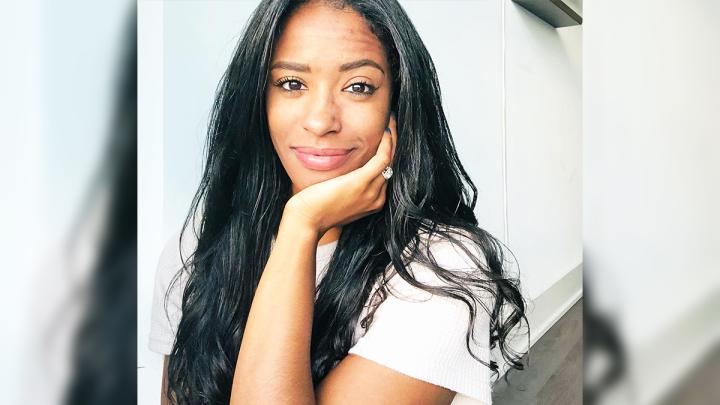Alumni Spotlight: Tyana Velazquez-Smith, PhD in Teaching & Curriculum

Tyana Velazquez-Smith is a PhD candidate in teaching and curriculum who will graduate in May 2023. Born and raised in Rochester, NY, she taught kindergarten for six years prior to enrolling in the doctoral program at the Warner School. She’s also spent the past year working as the Assistant Vice President for Education at The National Strong Museum of Play.
Why teaching and curriculum?
Growing up, I’ve always known that I would get a PhD. When I was 18, I created a bucket list that consisted of getting my doctorate. I went this route, rather than staying in my Kindergarten classroom, because I wanted to impact more than 30 kids at any given time. That required me to get a degree that would allow me to make a larger ripple impact in the community. Additionally, for representation purposes, the data tells us that there is not a lot of Black PhDs, specifically within the intersectionalities of being Black and Latina. As an undergraduate, I worked with a close mentor, who asked me what I wanted to do. At that point, I knew that I didn’t want to be a classroom teacher my entire life. She then shared an article with me that pointed to only two percent of PhD holders being Black. That’s when I knew I had to get my doctorate.
Why Warner?
I completed my master’s in the TESOL and urban leadership programs at Warner. At that time, I met Dr. Joanne Larson, who helped me through the whole process of getting a PhD. I ended up staying at Warner because I had her as an incredible mentor. It was hard for me to imagine what getting a PhD would look like without having a fierce advocate, and she was that person for me. I felt comfortable staying at Warner because if I was going to have anyone, I knew it would have to be her.
What have you enjoyed most at Warner?
The most valuable part of this experience for me was having access to rich theory courses. Prior to that, I did not encounter a lot of conversation around theory in a way that connected with me and helped me to make sense of things that are senseless. Having the space at Warner to interrogate theory and how it applies to my own life and in my research, I can’t put a dollar amount to that. It was an invaluable experience, and often I say theory is what saved me because there is so much about the world that I had questions about, and there was no one pointing me in the right direction to find those answers. Having good courses about theory, those which include critical lenses, feminist lenses, Chicana lenses, is what helped me become a better educator and a better global citizen.
What is the focus of your dissertation?
My dissertation focused on the lived experiences and the literacy practices of Black elementary female students during ELA time in predominantly White schools. Specifically, I looked at how they make space during ELA time to engage in culturally nuanced literacy practices. Through my research, I found that participants felt that ELA time was not a space where they could be creative, where they felt safe and protected, or where they could arrive at their whole selves. I found that also applied to their lived experiences in school in general. So typically, if they’re not having a good school experience, ELA time isn’t going to be any better. ELA time makes that worse when their access to Black girl representations in literature is scarce and when they are subjected to close-ended assignments that don’t cultivate their own Black girl genius, so it exacerbates the issues even more within that context.
My findings were two-fold. First, the participants experienced a lot of in-school violence—anything that causes psychological, physical or mental harm—along with a myriad of other racialized experiences for being Black girls in a predominantly White space that operates systems of oppression. They were keenly aware of the differences in that space, but they were using literacy practices that were rooted in self-love, play, imagination, joy and solidarity when they were taken outside the ELA time. And, in this “hush harbor” space that we worked together, they created monologues, short stories, comic books, drawings, poems, and songs that articulated the fullness of the breadth of their lived experiences and also developed futuristic dreams of what a safe space would look like in their school.
What does a day look like for you at The Strong Museum?
As an educator within a cultural institution, no two days look the same for me. My job capacities include supporting educational programs, both internally and externally, at The Strong National Museum of Play. That includes establishing partnerships with community partners in ways that we’re doing equity-centered community outreach. My work also focuses on teacher and pre-service professional development and centering the conversation around play being a human right. Centering play equity in my professional development is my personal mission. Somewhere along the lines of practitioners and the system of education, we’ve gotten away from the idea that play is the way that all humans learn. I also manage our onsite preschool, where I work with teachers, families, and preschoolers to ensure that they have access to an abundance of play and rich play experiences in their classrooms.
What are your future career goals and plans?
I want to work with Black girls and create hush harbor spaces where their literacy practices are cultivated, protected, and centered. That can look like a million different things. It could be opening my own center, or it could be doing it out of my house. Through my dissertation work, I’ve created a close community of Black girl participants and their families with whom I’ll continue work. Upon graduation in May, I’ll always keep protecting and listening to Black girls and Black women.